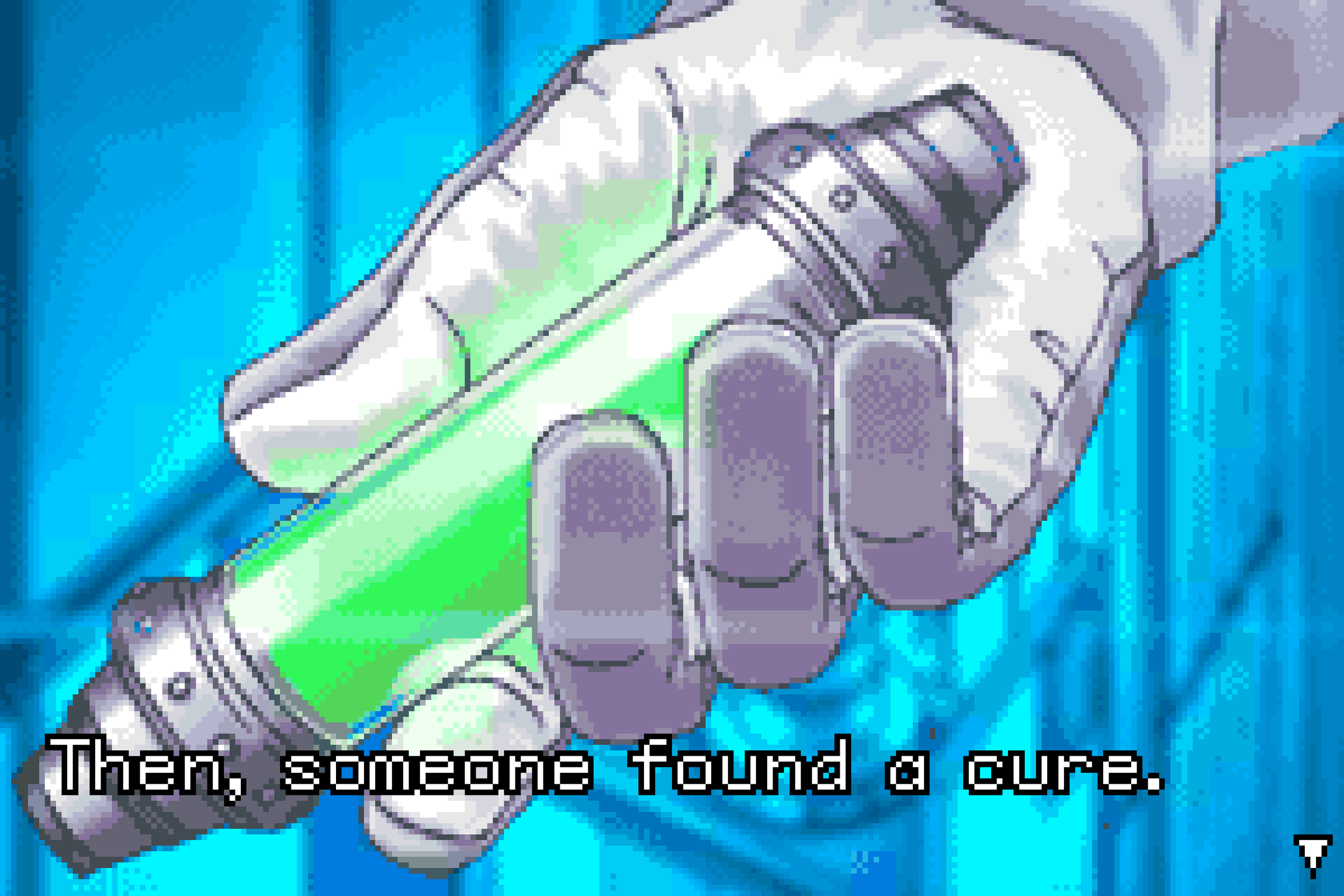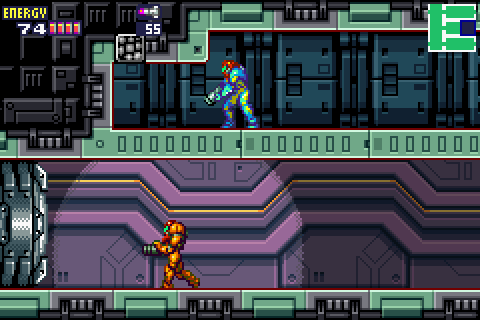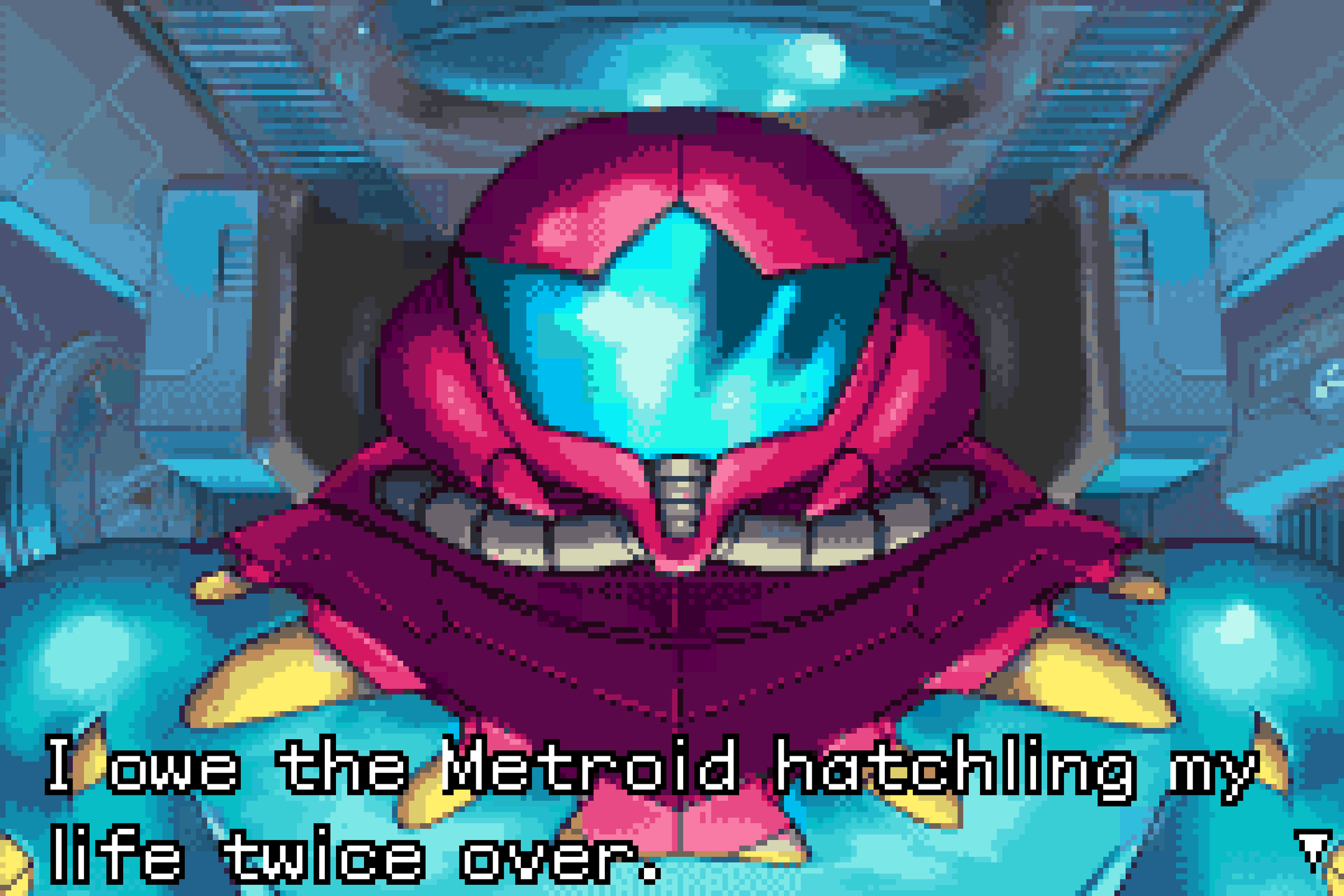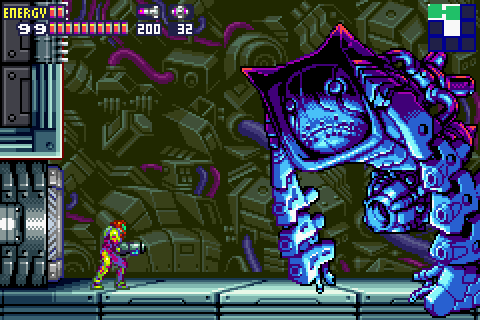Metroid Fusion review
Metroid Fusion holds an interesting place in gaming history. The latest entry in the Metroid story (before Dread, that is) and last original 2D Metroid (again, before Dread), it was the game that fans were clamoring for before its release on the GBA in 2002. However, it was released alongside Metroid Prime for the GameCube, which as the first 3D Metroid game, went on to become an absolute smash-hit.
So Fusion held most of the anticipatory buzz, but it was Prime that really blew people away. How did that happen?
Well, despite Fusion carrying on the story after the universally adored Super Metroid, and largely bringing its core gameplay to Nintendo’s darling handheld, the game did do a few things differently than its predecessor.
Chief among these changes was the fact that Samus received mission directives from Adam, her ship’s computer. Many hardcore fans were put off by being told where to go, as free exploration—with a great deal of backtracking—is one of the core aspects of any Metroid game. Without the prospect of getting completely lost in an underground labyrinth, what was the point? Plus, Samus’s design looked wildly different; her Power Suit getting an organic facelift as part of the game’s story.
Metroid Prime, on the other hand, stuck pretty close to the Super Metroid formula. Sure, the gameplay was 3D and in first-person. However, beyond the requisite changes required to make the game use the Z-axis, it maintained a tone and aesthetic very similar to Super. Samus’s Power Suit in particular, was extremely familiar; basically the same as in Super Metroid. Much like Super Mario 64 had done a generation before, Prime was translating the classic Metroid experience into 3D, not reinventing it. And it accomplished that goal with flying colors.
The early 2000’s was also still primetime (see what I did there?) for the appeal of 3D game design, with 2D games largely looked down upon as being inferior. You know, despite the fact that pixel art was looking better than ever, exquisitely hand-drawn visuals were actually becoming possible, and almost every camera in 3D gaming was just straight-up unmanageable garbage. As it happens, this is why Fusion came out on the GBA and Prime was on the GameCube—by this point, 2D games were already being relegated to handhelds.
The SA-X does not f#*^ around, bro.
Looking back on 2002’s Metroid titles today, it’s wild to consider the embarrassment of riches we received. After years with no Metroid games at all, we got a new proper 2D Metroid in Fusion and a revolutionary first-person Metroid in Prime. And the fact that we still pit these two gems against each other is rather bizarre.
Because Metroid Fusion is an excellent game on its own, and I honestly feel that it is often unfairly maligned. For one thing, it continues the Metroid saga and takes the story somewhere new. It also manages to produce some legitimately tense/scary moments, which you probably wouldn’t expect a handheld game to pull off. The eerie atmosphere and requisite sense of danger are there, and the controls actually improve on Super Metroid quite a bit.
Now I like 2D adventure games and I like pixel art, so the visual aesthetic of Fusion is bound to be my jam…and it is! Despite putting Samus in a different environment with new obstacles to tackle, the game retains that Metroid sci-fi horror atmosphere and looks great doing it. The shapeshifting qualities of the X-parasite make for some extremely cool enemy animations, and the level backgrounds are equally beautiful and varied. Throw in some anime-esque stills for the cutscenes and you’ve got a consistently solid visual style.
Regarding Adam’s guidance and the handholding criticism, I think it’s a bit overblown. You aren’t told much more than what section of the space station to explore next. And every “mission” you are given will encounter inevitable complications, requiring you to improvise anyway. The guidance mainly serves to eliminate backtracking—which while a core piece of Metroidvania game design, is often cited as the one aspect of Metroid that people truly do not like. It’s not like the guidance Adam gives you turns Fusion into Baby’s First Metroid.
Although that said, this game does make for a fairly good entry point in the series.
If you’ve never played a Metroid game before, I would certainly recommend starting here. Zero Mission is also a great starting point, since it’s a remake of the original Metroid adventure but using Fusion’s improved controls and visuals. Hard to beat that! When I finally got around to completing Super Metroid (in like 2012!), I then immediately played through Fusion, and then played through Zero Mission. It was an excellent February, I tell ya.
When it comes down to it, Fusion’s greatest sin is simply not being Super. Super Metroid was an absolute triumph, executed near flawlessly; it’s arguably the perfect video game. With Fusion, Nintendo was bold enough to make a sequel to that masterpiece and take Samus’s story into new territory. Basically any aspect of Fusion that diverges from Super’s formula was bound to attract criticism. (Even when Fusion’s controls actually feel more comfortable than Super’s ever did.)
If you’re a Metroid fan then—well, honestly—I’m sure you’ve already played this game. But if you tried it once back in the day, bounced right off and decided to just play Prime instead, then I’d definitely recommend giving it another look. There’s a lot to love about this game, especially when 2D is the pure Metroid experience.
Metroid Fusion may have been overshadowed, but it’s a damn good time.










